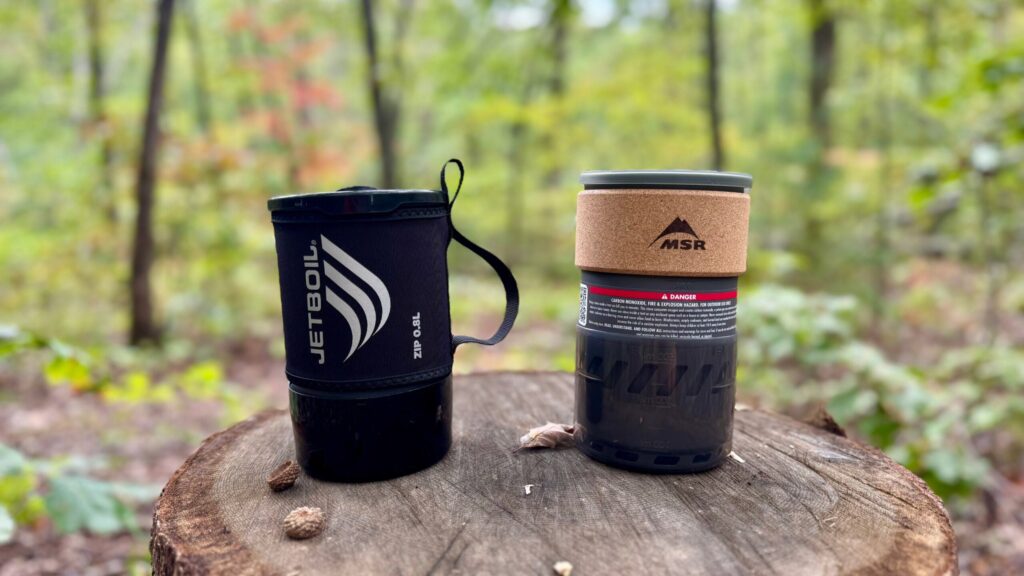We took these lightweight stoves into the backcountry to determine which one is best for your next adventure
(Photo: Graham Averill)
Published September 30, 2025 01:57PM
Backpacking stoves solve a basic problem: You’ve just hiked several miles into the woods, you’re tired and hungry, and if you don’t have a hot meal you’ll throw a tantrum like a toddler who doesn’t get ice cream at the fair. Jetboil and MSR have a long history of addressing this predicament and both companies make iconic backpacking stoves. MSR’s Whisperlite set the standard for quiet, lightweight stoves in the ’80s, while Jetboil reinvented the “personal cooking system” with an emphasis on efficiency when they introduced their first stove in the early 2000s.
Both iconic brands recently introduced new stoves designed for the backcountry—the Jetboil Zip and the MSR Switch—so I decided to pit them against each other in a head-to-head test.
Jetboil Zip vs. MSR Switch: What You Need to Know
Both stoves are designed to be lightweight, compact cooktops for the backcountry, but they take slightly different approaches to accomplish the job. While they have similar aesthetics, the specs and features vary enough that you need to think about your priorities and how you like to cook while you’re backpacking before you make a purchase.
Neither the Zip or Switch would be considered ultralight by purists standards, but they’re plenty light and compact for backpackers who aren’t shaving the handles off of their toothbrushes. And both stoves are very packable, with a design that allows you to stack all of the parts, even the gas canisters, inside the main cooking pot. It’s a convenient approach that keeps everything you need for dinner in one spot. They’re also both easy to use thanks to intuitive systems that even beginner backpackers would have no problem understanding. Although, I did have a friend ruin a Jetboil once because he didn’t take the plastic protector off the bottom of the pot before trying to boil water. So make sure you do that.
Jetboil Zip: Straightforward, Efficient, But Not Versatile
The Jetboil Zip is basically the little brother to the popular Jetboil Flash cooking system. Instead of the Flash’s 1-liter volume, the Zip gives you a slightly more demure .8-liter volume, so it’s designed for a single backpacker cooking for themself. Like all Jetboils, the Zip is a water-boiling device, with a stove that’s designed specifically to be used with the pot.
Jetboil Zip 0.8L Fast Boil System
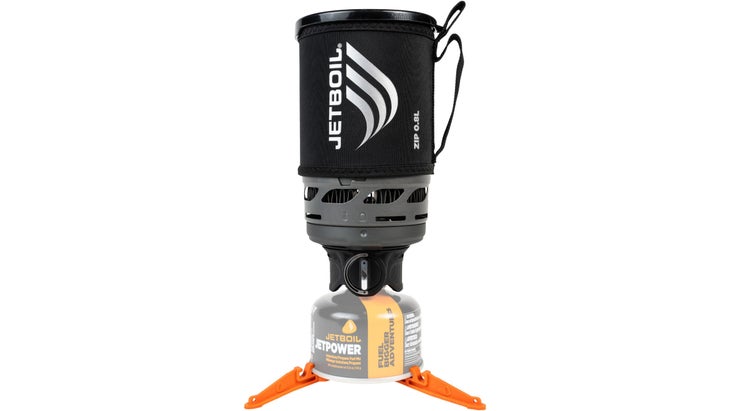
Weight: 12 oz
Volume: .8 liter
Fuel type: Isopropane canister
Claimed Boil Time: 2 minutes
If you want a system that allows you to boil eggs or make stir fry in the backcountry, look elsewhere. The Zip is for boiling water for dehydrated meals and instant coffee. Personally, I think that’s just fine because that’s what I eat and drink when I’m miles from the nearest refrigerator. I’ve never been one to pack in fresh food or catch my own dinner, but if you are that type of backcountry warrior, don’t worry, we’ll get to the Switch soon.
Jetboil Zip: New Features
I’m not an ultralight ounce counter, but I like the compact nature of the Zip. Cutting the size down from 1 liter to .8 ounces makes a difference in how much room the system takes up in my pack. I also appreciate how the Zip stove connects to the Zip pot, as the two pieces twist and lock together, allowing you to carry the stove/pot/fuel around as one unit.
Much like the popular Flash, the Zip has a neoprene insulating sleeve so you can handle the pot while it’s hot and a nylon handle that slips over your hand so you don’t drop it. But the Zip does not have a push-button ignition system. You need to light the stove with a match or lighter, which is either a turn-off or turn-on depending on your school of thought when it comes to camp cooking. Some people don’t like having to remember matches and get nervous lighting a match near flammable gas. It’s understandable. But if there’s a single piece that’s most likely to fail on a backpacking stove, it’s the push-button ignition system. The wick can get wet, bent or break off and then you’re back to lighting the stove with a match when you want to cook. As long as you remembered to bring the matches, that is.
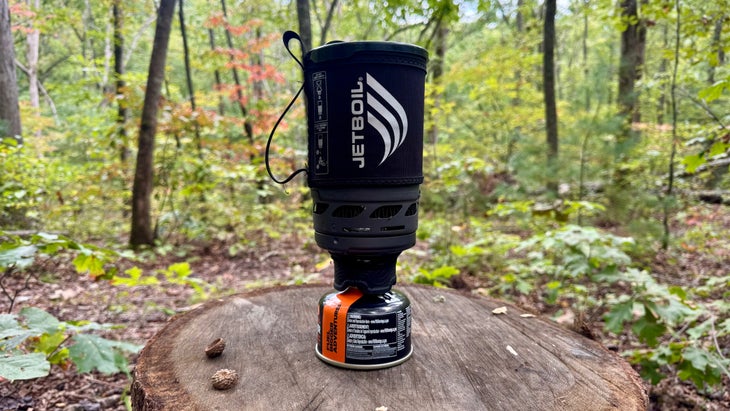
My favorite feature of the Zip is the gas knob, which, with a simple 180-degree turn radius,looks like a miniature version of the knobs on my gas grill at home. I like this detail because I know exactly how much gas I’m releasing. It’s a small thing, but with some stoves, I’m not sure if I’ve opened the valve 100 percent or just a little bit.
As for the claimed boil time of two minutes—with 16 ounces of water in the pot, I got a rapid boil at 2:10 with the gas turned on half way. That’s pretty fast, and increasing the gas to full send shortens that already rapid boil time.
The Zip has performed exactly as it should during the two weeks I’ve tested it, using it in my backyard, at the trailhead, and on a quick overnight in Great Smoky Mountains National Park. It is efficient and easy to use, and my only complaint is that the Zip is a tool for one thing and one thing only: boiling water. If you want to get more creative with your backcountry meals, you’ll need a different system, which brings us to the MSR Switch.
MSR Switch: More Volume, More Versatility
MSR’s Switch has a lot of the features backpackers have grown to love from the company’s storied gear: a stove that is reminiscent of the PocketRocket, and a pot that takes its cues from the Reactor. The Switch sets itself apart from the Zip in two obvious ways: It holds a liter of volume, so you could boil water for two meals at once, and it has the Piezo ignitor system, so all you have to do is push a button to light the flame.
The Switch also has a feature that many stoves in this price point don’t have—a built-in pressure regulator that sets the gas output at an exact level to optimize fuel consumption, even when the canister gets low on fuel. The knock against stoves without a regulator is that they can’t operate well on a fuel canister that’s low on gas.
MSR Switch
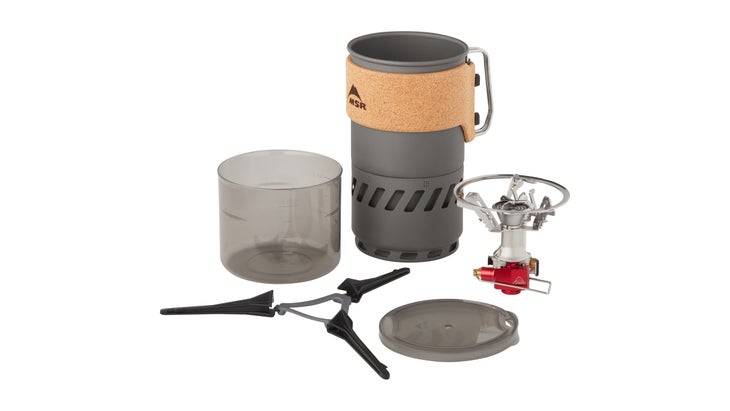
Weight: 13.8 oz
Volume: 1 liter
Fuel Type: Isopropane canister
Claimed Boil Time: 2:30 minutes
Just like the Zip, the Switch is designed to boil water fast (I got 16-ounces of water boiling rapidly in 2:50) but unlike the Zip and most other personal cooking systems, the Switch can also accommodate other pots and pans. The stove works seamlessly with the Switch’s included pot, but if you fold out the three grooved supports on the stove, you can use it with any pot or pan in your quiver. This means you can catch a fish and fry it up in a pan, or bring some farm-fresh eggs for breakfast. I really like the versatility of this feature and it makes me wish I was willing to haul fresh food and an extra pan into the backcountry to make a decent meal.
MSR Switch: New Features
There are a few other neat features with the Switch that are worth mentioning. Instead of a neoprene sleeve, MSR added a cork wrap to insulate the pot and keep your hands safe. The cork wrap and the pot’s rigid handles work together to make it very easy to pour water when it’s time to “cook.” If you really want to shave weight, you can remove the cork wrap, but if you’re counting ounces, you should probably look at something like MSR’s PocketRocket2, which weighs just 2.6 ounces.
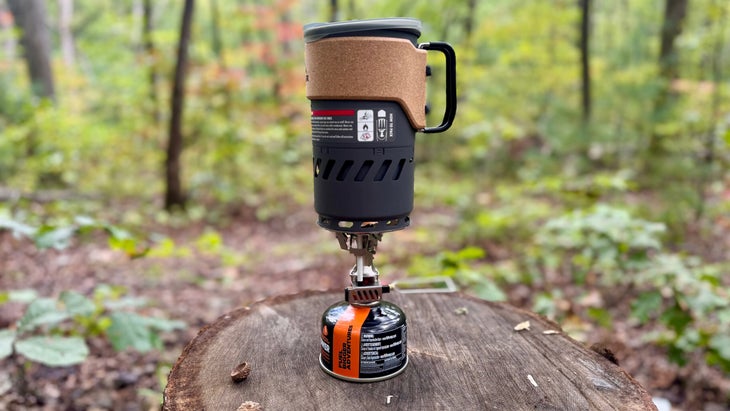
The support legs, stove, and fuel canister all nest inside the main pot, just like the Zip. It’s a little taller than the Zip, but you get more volume and way more versatility in the kitchen. My only criticism of the Switch is that the stove and water pot don’t lock together in the way that the Zip and many other backpacking stoves do. It’s a minor detail that might not bother some people, but I like the convenience of being able to move the pot/stove/fuel canister as one unit.
Final Verdict
So which stove is my favorite? Personally, the Zip fits my needs in the most efficient manner. It’s a compact and efficient tool designed for boiling water, which is all I want to do when I’m backpacking. But if you want more versatility in the backcountry, and are seeking a stove that works as your water boiling system and a way to cook actual food when you’re deep in the woods, MSR’s Switch is the option for you.
Graham Averill is a gear and travel columnist for Outside magazine. He makes a resolution every year to backpack more often, but it never seems to be enough. He recently wrote about an electric cooler that has become his go-to option for car camping.


